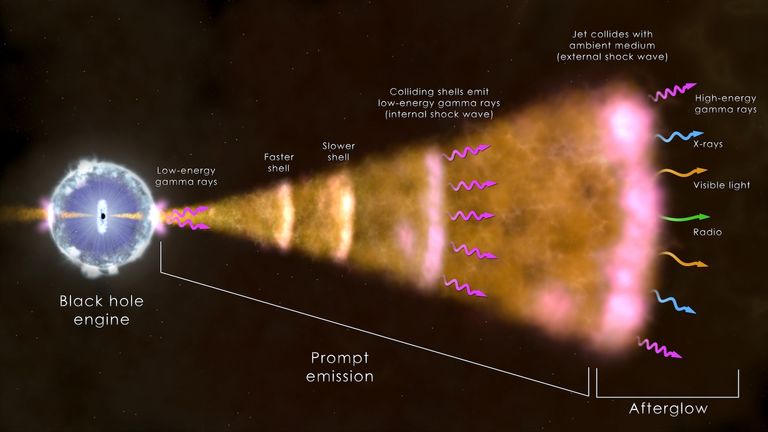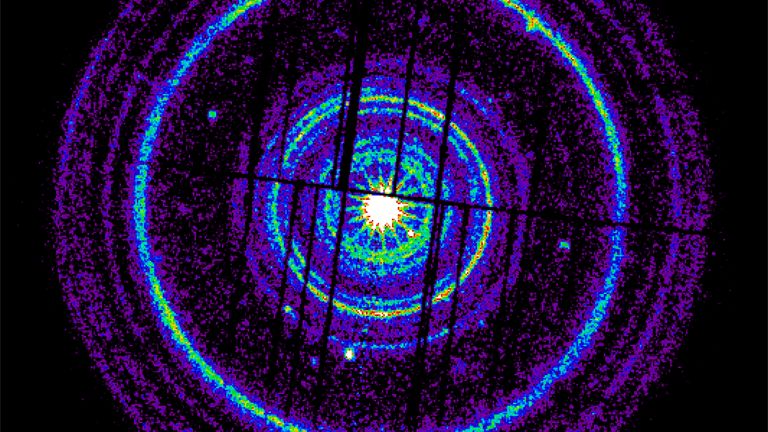A cosmic explosion that blinded space instruments could be the brightest ever recorded, astronomers say.
The explosion, which occurred in October two billion light-years from Earth, produced an intense pulse of radiation that swept across the solar system, triggering detectors on multiple spacecraft.
Scientists said the event was a gamma-ray burst (GRB), known for being the most powerful and brightest explosions in the universe.
Astronomers say it’s the brightest it’s been since the dawn of human civilization, blinding most gamma-ray instruments in space.
This means that researchers cannot measure the true intensity of the emissions and must reconstruct their energy expenditure from past and present data.
An analysis of 7,000 GRBs shows that the event, known as GRB 221009A, is 70 times brighter than anything seen so far and occurs only once every 10,000 years.
Dr Dan Perley of the Liverpool John Moores University Institute of Astrophysics, who tracked the event on the Spanish island of La Palma with the university’s Liverpool Telescope, said: “There is nothing in human experience that matches this downpour. Heavy rain on par. Or energy. Nothing.”
Although they only last a few seconds, gamma-ray bursts produce as much energy as the Sun releases in its entire lifetime.
“amazing energy”
Dr Perley said GRB 221009A produced “amazing energies”, adding: “This is certainly the highest ever recorded for a gamma-ray burst.”
According to the European Space Agency (ESA), the explosion deposited about 1 gigawatt of energy into the Earth’s upper atmosphere, equivalent to the energy output of a power station.
Astronomers think GRB 221009A is the result of a massive star collapsing itself to form a black hole.
“The star could be many times the mass of the sun, possibly 20 or more times the mass of the sun,” Dr Perley said.
GRBs are closer to Earth than others
GRB 221009A is thought to be so bright because it is much closer to Earth than other known GRBs, and its beam of electromagnetic radiation happens to point in Earth’s direction.
GRBs can also produce supernovae, but astronomers have not yet determined whether this has happened.
They are usually followed by a shockwave that emits lower-energy radiation, called an afterglow, that fades over time.
The findings are published in two separate papers in The Astrophysical Journal and The Astrophysical Journal Letters.


